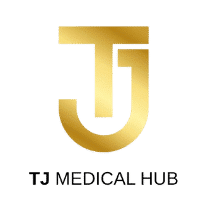Unlock the secrets of Platelet-Rich Plasma (PRP) Injections – a revolutionary medical procedure harnessing the body’s natural healing components for optimal skin rejuvenation and overall well-being. Delve into the transformative powers of PRP therapy and discover how it can enhance your vitality.
What is Platelet Rich Plasma (PRP)?

Platelet Rich Plasma (PRP) involves concentrating platelets from a patient’s blood through a plasma separation process. This results in protein-rich platelets that aid in skin cell restoration, tissue and collagen creation, making the skin flexible, and reducing wrinkles, dark spots, scars, and acne marks. PRP utilizes the patient’s blood, ensuring no complications or allergic reactions. Minimal swelling may occur after injection, disappearing within days.
Origins and Functions of Platelets
Human blood comprises liquid plasma, red and white blood cells, and platelets. Platelets help blood clot and contain proteins crucial for growth and injury treatment. Concentrated platelet extraction involves spinning a blood sample to separate platelet-rich plasma. This concentration is used to treat various conditions like muscle inflammation, tendonitis, skin rejuvenation, and repair.
Functions and Growth Factors in PRP
Platelets function as cells aiding tissue healing and skin repair, filled with Growth Factor molecules. PRP contains growth factors like Platelet-derived growth factor (PDGF), Transforming growth-factor-beta (TGF-b), Vascular endothelial growth factor (VEGF), Epidermal growth factor (EGF), Fibroblast growth factor-2 (FGF-2), and Insulin-like growth factor (IGF). PRP treats hair loss, facial skin rejuvenation, collagen increase, and addresses acne scars and physical injuries.
What injuries can PRP injections treat?

PRP injections are primarily employed for soft tissue injuries, including minor tears in the rotator cuff and Achilles tendon. Its application in other soft-tissue injuries is increasing. Demonstrated benefits include improved function and reduced pain in individuals with tendonitis or chronic tendinosis conditions like tennis elbow or golfer’s elbow.
PRP is also effective in treating ligament and muscle injuries. Enhanced muscle regeneration has been observed in injuries to the gastrocnemius (calf) muscle.
Recent findings indicate that PRP treatment surpasses hyaluronic acid injections (known as viscosupplementation or “gel shots”) for knee osteoarthritis, particularly in terms of the duration of its positive effects. However, emerging data suggests that the combination of PRP and hyaluronic acid is more effective than either treatment alone.
How are PRP injections performed?
PRP injections involve drawing a small amount of your blood, spinning it in a centrifuge to concentrate platelets, and then injecting this platelet-rich solution directly into the targeted area, often guided by ultrasound imaging for precision. Witness the transformative potential in the images depicting a PRP injection into a torn tendon, expertly guided by ultrasound for accuracy. The activation of concentrated platelets in platelet-rich plasma releases growth factors, elevating the production of reparative cells, thus amplifying the body’s innate healing mechanism.
Do PRP injections have side effects or risks?
PRP injections carry minimal side effects or risks, as they are derived from your own blood, reducing the likelihood of rejection or adverse reactions. While there is a remote risk of infection, there are generally no significant risks, aside from the variability in how effective the treatment may be for an individual patient.
What is a PRP injection?

Platelet-rich plasma (PRP) is derived from an individual’s own blood, focusing on platelets crucial for blood clotting. Injected into injured or diseased areas, it expedites healing in tendons, ligaments, muscles, bones, and joints. PRP injections offer a notable advantage by potentially minimizing the reliance on opioids or over-the-counter anti-inflammatory medications. It’s recommended to discontinue anti-inflammatories during PRP treatment, as the platelet-rich plasma optimizes the initial inflammatory response integral to the healing process.
This routine helps tighten pores, reduce swelling, and maintain optimal skin health. Cold water aids in pore tightening and minimizes puffiness, while the moisturizing cream ensures hydration, particularly after washing when the skin is most receptive. Prioritizing a consistent and effective facial cleansing routine is key to achieving and maintaining timeless radiance without resorting to surgical methods.
At TJ Medical Hub, our aim is to deliver the best content to our readers, In conclusion, Platelet-Rich Plasma (PRP) Injections emerge as a cutting-edge medical approach, utilizing the body’s natural resources to promote healing. This minimally invasive procedure holds promise for treating diverse conditions, offering patients an alternative to traditional methods. Explore the transformative potential of PRP in enhancing the body’s reparative processes.


